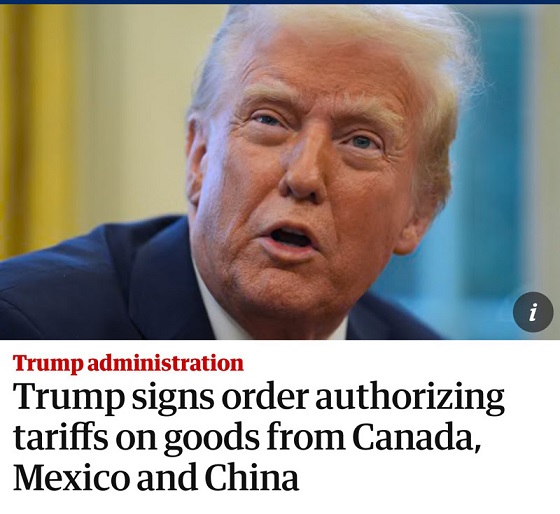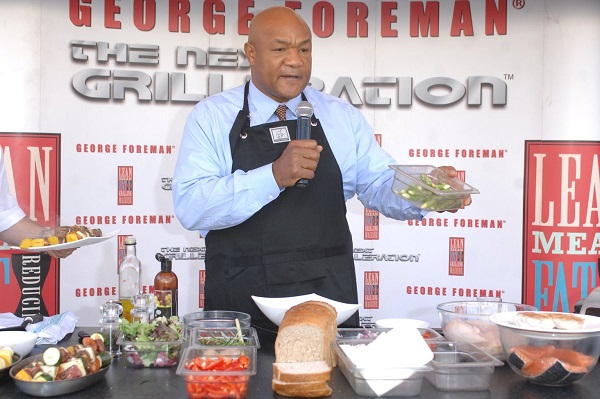Also Interesting
Travel Tips for Meeting Someone From Another Country

With the rise of online dating apps and international brides site, it’s easier than ever to meet and
connect with potential partners from all over the world. While getting to know someone online
can be exciting, taking the next step to meet them in person for a first date can be thrilling but
also nerve-wracking. Planning a trip abroad to meet an online match for the first time adds extra
layers of complexity and potential challenges if you don’t prepare properly.
This article provides important tips for having a smooth, enjoyable, and safe trip when traveling
to meet an international online connection. With the right preparation and expectations, your
overseas travel can lead to incredible new adventures and deepened relationships.
Research the Destination Thoroughly
One of the key steps is doing thorough research beforehand about your date’s home country and city. This includes:
● Learning Cultural Customs and Etiquette – Study up on the local customs so you don’t inadvertently do something offensive. For example, certain hand gestures or body language could be inappropriate. Make sure you understand etiquette around things like greeting kisses, acceptable public displays of affection, dress codes, gift-giving, etc.
● Travel Requirements – Check visa, passport, and other travel requirements for your nationality. Make sure your passport is valid for at least 6 more months beyond the dates of travel. Secure necessary visas well in advance.
● Safety Risks – Read travel advisories and warnings from government sites to be aware of any safety risks or scams targeting tourists. Learn some basic emergency phrases in the local language.
● Transportation – Research options for getting around the destination, whether it’s trains, metro, taxis, or ride shares. Know options for getting to and from the airport.
● Lodging – Book a hotel or Airbnb in advance. Look for accommodations in central, well-lit areas rather than isolated locations.
Have Realistic Expectations
No matter how well you’ve connected with someone online, recognize that in-person chemistry is not guaranteed. Try not to build up fantasies about your first meeting being perfect. Remind yourself that you’re still getting to know this person.
Keep a realistic mindset about how well your different personalities, communication styles, values, and quirks will mesh in person. Be open-minded but also listen to any hesitations or doubts you feel.
Don’t rush into major commitments too quickly. Make returning home an option if you decide during the trip that you’re ultimately incompatible.
Take Basic Safety Precautions
Use common sense safety precautions, especially when meeting someone for the first time who you connected with online. This includes:
● Initially meeting in a public place like a restaurant or cafe rather than a private location. Do not agree to meet at their home or hotel room until you are comfortable.
● Avoid sharing your full itinerary and hotel address. Provide general details of the area, but not specifics.
● Check-in with a friend or family member back home periodically. Give them your date’s name, phone number, and information.
● Use extra caution if your date wants to take you to an isolated or unfamiliar location. Decline invitations that seem risky.
● Do not accept drinks you did not see poured and do not leave your drink unattended.
● Trust your instincts. If you feel uneasy, uncomfortable, or threatened, remove yourself from the situation.
● Arrange your transportation or travel by taxi/ride share rather than relying on your date for transport.
Have a Backup Plan
No matter how carefully you prepare, things may not go perfectly according to plan. Your in-person chemistry may not live up to the online connection. Logistical problems or disagreements could arise. One or both of you may decide you are not a match.
This is why it’s crucial to have backup plans in place for where to stay and how to get around if
needed:
● Book refundable flights and hotels when possible so you can change plans if needed.
● Research alternatives for places to stay, even if just a hotel to spend the night until your return flight.
● Know how to get around independently via taxi, metro, rideshares, etc. Don’t rely solely on your date for transportation.
● Have enough cash on hand for backup hotels, meals, and transportation in case of disagreements.
● Let a friend or family member know where you will be staying and meet up with them if plans for your date drastically change.
Bridge Any Language Barriers
For maximum comfort and connection on your overseas first date, try to bridge language and communication gaps as much as possible.
● Use translation apps to communicate important logistics and information before the trip. Slowly build your proficiency in their language by practicing common phrases and exchanging voice messages.
● Learn key date phrases like “hello”, “nice to meet you”, and “thank you”, etc. in their native
language. Showing effort means a lot.
● Be patient and speak slowly. Use body language to aid understanding. Avoid using complex slang or phrases they may not understand.
● Clarify meanings frequently to avoid misunderstandings. Don’t rely on assumptions.
● Have the hotel address and other logistics written down in both languages to show taxis, etc. if needed?
Overcoming language and cultural barriers shows commitment and can deeply strengthen your bond. The effort fosters openness, patience, and adaptation skills that enrich relationships.
Budget Accordingly
The costs add up quickly when traveling overseas to meet someone, especially when two people are involved. Carefully factor these expenses into your budget:
● Flights – Roundtrip international flights can easily be $1000+ per person. Try to book early for deals. Consider cheaper regional airports.
● Travel Documents – Factor in visa application fees, passport renewals, etc. which can cost $200+ depending on country.
● Accommodations – Hotels for even a few nights can run $100+ per night, or $1000+ for two people for a week. Price Airbnbs accordingly as well.
● Meals – Estimate $40-60 per day per person for simple meals to get a daily budget.
● Getting Around – Budget for trains, taxis, metro rides, etc. to get to activities and dates.
● Activities/ Entertainment – Entrance fees for museums, shows, attractions, and dates can add up too. Allocate accordingly.
● Emergency Funds – Have at least $500 extra as a buffer for unexpected changes, hotels, and meals if plans fall through.
While exciting, international travel is expensive. Carefully manage finances to reduce stress, arguments over money, and unexpected shortfalls.
Understand Visa Rules
Before you book travel, carefully research the visa requirements for your passport and the length of stay in your destination country.
● If a tourist visa is needed, apply well in advance as the process can be lengthy. Don’t risk being denied entry after booking non-refundable tickets.
● Make sure your passport has 1-2 blank pages for visas and entry stamps. Renew early if needed.
● Abide by the authorized length of stay granted with your visa. Overstaying could lead to serious legal trouble or bans from the country.
● If planning a longer visit, research extended stay or partner visas that allow you to legally reside abroad if the relationship progresses.
Trying to circumvent visa rules is never recommended. Be sure to follow proper immigration procedures and be honest if questioned by border officials to avoid red flags in the system that could jeopardize future entries.
Experience the Destination Together
Don’t spend all your precious overseas time holed up in a hotel room. Take advantage of exploring the exciting new destination together with your international date. This allows you to get to know each other in fun, active settings while creating wonderful shared memories.
Make time for activities like:
● Take a walking or cycling tour to see key landmarks
● Visiting famous museums and appreciating the culture
● Trying local flavors and dishes at restaurants and food markets
● Seeing a concert, theatre performance, or dance show
● Hiking scenic nature trails or parks together
● Learning something new like cooking classes or language lessons
Blending cultural immersion with quality time together makes for a richer dating experience. It builds bonds based on shared interests and new horizons.
Traveling overseas for an international online date is an exciting adventure when done thoughtfully. While language and cultural barriers exist, they can foster understanding.
Preparation and research are key for smooth travel. Most importantly, trust your instincts and do
not take unnecessary risks safety-wise.
With realistic expectations, budgeting diligence, and embracing the unknown together, your first
meetup can flourish into lasting love fueled by the spirit of adventure.
Also Interesting
The bizarre story of Taro Tsujimoto

The National Hockey League (NHL) has seen its fair share of strange moments, but few compare to the bizarre and hilarious tale of Taro Tsujimoto, a player who never existed. His “selection” in the 1974 NHL Draft remains one of the most legendary pranks in hockey history. If you want to wager on actual players, making the 1xBet app download is definitely a great idea.
In the 1970s, the NHL Draft was a much less glamorous event than today. It was a tedious process conducted over the phone, with teams calling in their picks. The 3 biggest highlights of what happened during that year’s draft were:
- the draft dragged on for hours;
- there were multiple rounds and teams selecting unknown prospects from obscure leagues;
- frustrated with the monotony, Buffalo Sabres general manager Punch Imlach decided to have a little fun.
As the 11th round approached, Imlach instructed his team’s representative to draft Taro Tsujimoto, a supposed forward from the Tokyo Katanas of the Japan Ice Hockey League. The name sounded authentic enough. The league officials, unfamiliar with Japanese hockey, accepted the pick without question. By downloading the 1xBet app you will also be able to wager on great NHL teams too.
A small problem
There was a small problem with all of this, as 2 things didn’t exist: Tsujimoto and the Tokyo Katanas. Imlach had completely fabricated the player as a joke, taking advantage of the NHL’s lack of verification. When it comes to NHL wagers, there is no better platform than the 1xBet Canada site.
For weeks, the league listed Tsujimoto as an official draft pick, and even some newspapers reported on Buffalo’s mysterious new Japanese prospect. Eventually, the Sabres admitted the hoax, and the NHL was forced to retroactively erase the selection from its records.
Despite being a fictional player, Taro Tsujimoto took on a life of his own. Buffalo Sabres fans embraced the prank, and over the years, his name has become a cult legend in hockey culture. Some fans even wore jerseys with “Tsujimoto” on the back. The joke persisted so much that when EA Sports released NHL video games, players could occasionally find Tsujimoto in the game’s draft pool as a hidden Easter egg.
More than just a prank, the story of Taro Tsujimoto highlights 2 things: the quirks of old-school sports management and the creativity of one of hockey’s most colorful executives. Today, with the draft process being highly scrutinized and broadcast live, such a prank would be impossible. But Tsujimoto’s legacy lives on as one of hockey’s greatest inside jokes. What is not a joke are the great rewards that a platform like the Canadian 1xBet site can give you.
Also Interesting
60% of Canadians gamble each month – why the industry is going from strength to strength

When it comes to regulating gambling, Canada has a somewhat relaxed approach. The Canadian Gaming Association oversees the industry, but it’s up to individual provinces to enact and enforce any laws relating to online casino gaming, sports betting, traditional casino gaming, and other forms of gambling.
Canada’s online casino gaming laws are not totally clear, but individual provinces are starting to put this right. Ontario was the first and did so when it launched its own regulated igaming market in April 2022. Now some other provinces have followed suit, creating a safer igaming environment for players in those provinces. Below is a look at gambling in Canada compared to other parts of the world, at gaming laws in Alberta compared to other provinces, and at the future of the Canadian, US, and UK gambling industries.
Canada: a forever love of gambling
Gambling in some form or other has always been popular in Canada. Way back in the 1990s, research found six in ten Canadians (60%) gambled every month. Additionally, four in ten (43%) spent between 1 and 20 Canadian dollars on gambling. Fast forward to today and the Canadian gambling market is worth 14.2 billion US dollars as of January 2024, according to data on the website of consumer and market data company Statista.
It seems Canada enjoys wagering just as much as two other countries that love a gamble: the US and the UK. Data on the Statista website shows that 49% of US adults took part in gambling activities in 2023. Fifty-six percent said their attitude towards gambling had relaxed, compared to the 50% of 2019.
The UK returned similar stats for the same year. Forty-eight percent of adults reported engaging in gambling activity. Online casinos generated the most gross gambling yield in 2023, but it was the nation’s National Lottery that people played the most.

Alberta: following Ontario’s lead
The regulatory developments in Ontario have triggered movement in Alberta. In May 2024, Bill 16, the Red Tape Reduction Amendment Act, made it through the process and later received Royal Assent to become law. The act removes the monopoly of gaming by a single government entity and will allow private operators, licensed by Alberta’s provincial regulator, to provide online gaming services in Alberta, meaning players will have a choice of more than one Alberta online casino to play at.
The regulation transforms Alberta into one of the more liberal provinces when it comes to online gambling, others being Quebec, Ontario, and British Columbia.
Several provinces, such as Novia Scotia and Northwest Territories, have no provincially regulated online gaming sites. Some also restrict betting on horse racing and/or other types of sports betting, obliging citizens to use international betting sites for freedom from caps and betting on as many events as they wish.

What lies ahead for the Canadian, US, and UK gambling industries?
Canada’s appetite for gambling is clear, and the industry’s online sector is beginning to thrive. Ontario has enjoyed vast success by creating its own regulated market, one which, in just its first year, saw Canadians place billions in wagers and the industry itself generate more than a billion in total gaming revenue.
Canada can expect to see other provinces follow Ontario’s lead and allow private operators to provide services in the province under license. The purpose of the regulation is player protection. Any province that develops a regulated market will focus on this, so there will also be regulations around the advertising of gambling services.
The US
Gambling online is the future for the US, too, although states are slow to legalize it. As of September 2024, 38 states had legalized sports betting, following the US Supreme Court’s ruling that states could regulate sports gambling directly.
Despite allowing sports betting, some states only permit in-person betting, and only a few states allow online casino gaming. Operators believe online casino gaming is the future of gambling.
The UK
In the UK, the use of artificial intelligence (AI) will get bigger and bigger. Companies have realized AI can enhance players’ experience and are embracing it more and more. For instance, sports betting websites can use it to crunch data and provide iGamers with stats and other data to make better betting decisions. They’re also understanding they can use AI to prioritize content players are likely to be interested in and to personalize their offerings and services to players’ preferences.
Canada enjoys gambling as much as America and the UK. Although laws around igaming are more of a grey area in Canada, some provinces are clearing the issue up by creating regulated markets and experiencing great success. As time goes by, more are sure to follow.
-

 Business1 day ago
Business1 day ago28 energy leaders call for eliminating ALL energy subsidies—even ones they benefit from
-

 2025 Federal Election1 day ago
2025 Federal Election1 day agoCarney’s Cap on Alberta Energy Costing Canada Billions
-

 Business1 day ago
Business1 day agoTrump Tariffs are not going away. Canada needs to adapt or face the consequences
-

 Economy21 hours ago
Economy21 hours agoSupport For National Pipelines And LNG Projects Gain Momentum, Even In Quebec
-

 Health1 day ago
Health1 day agoDr. Pierre Kory Exposes the Truth About the Texas ‘Measles Death’ Hoax
-

 Economy22 hours ago
Economy22 hours agoSolar and Wind Power Are Expensive
-

 Bruce Dowbiggin1 day ago
Bruce Dowbiggin1 day agoFrom Heel To Hero: George Foreman’s Uniquely American Story
-

 Business23 hours ago
Business23 hours agoWhy a domestic economy upgrade trumps diversification

